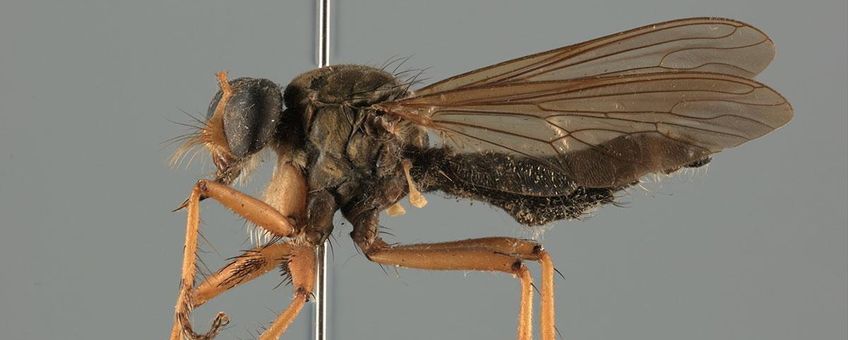
Naturalis and Picturae jointly digitize thousands of insects
Naturalis Biodiversity CenterVolunteers from Naturalis will pin the animals one by one on a tray, which will subsequently travel on a conveyor belt to the cameras. The device will take many photos of each insect and combine these to produce a single sharp image. The labels will be photographed separately. On a large screen, visitors will be able to see what is under the camera lens at that moment. The labels will also be given a small RFID chip so that these can be read out without having to open the specimen drawer.
More important than ever
Once they have been digitized, the insects will be available for scientific research. “And that is more important than ever”, says Dimitris Koureas, head of information at Naturalis. “Biodiversity is under considerable pressure worldwide. Therefore, natural history collections must be available to scientists, and that means making them digitally accessible.”

Koureas therefore finds it a shame that the installation will already leave at the end of July. It is initially intended for the Museum für Naturkunde (MfN) in Berlin, which will digitize no less than 500,000 insects. The MfN, just like 120 other museums, is part of the DiSSCo initiative that will make all natural history collections in Europe digitally available. That project is being coordinated from Naturalis by Koureas.
Testing ground
The system has been developed by the Dutch company Picturae, which provides solutions to digitize archives and collections, store them, and make them digitally available online. Back in 2013, Picturae and Naturalis digitized the Naturalis collection of dried plants, some 5 million specimens. The insect scanning street is new and ushers in a new era for insect collections.
Picturae and Naturalis are working together on getting the installation ready and testing it. This concerns not just technical issues but also questions about how the setup can best be used in a museum. This is because Naturalis has not put the installation behind the scenes but in a museum hall where visitors can see the scanning taking place.
"Our task is to open up our collection to science and society. It is an enormous advantage when research on insects can be carried out worldwide at the click of a mouse, for example, to find answers to socially relevant questions about insect extinction," says MfN Director General Johannes Vogel. "With the support of digital indexing and digitization of our collection, we become a research museum open to all. Since researchers will then have to travel less to research objects, we will also make a contribution to CO2 reduction. We rely on cooperation with competent technology partners and develop freely reusable solutions to answer the questions of the future. Because many of the answers lie in the natural history collections of this world."
Sawflies
Six weeks is too little time to digitize all 18 million specimens of the full Naturalis insect collection. The scanning process will therefore focus on a single group, the sawflies. These are relatively small wasps without a ‘wasp waist’, the larvae of which look like caterpillars. The insect specialists from Naturalis and its partner EIS will use the photos for a distribution atlas of all sawflies.
More information
- About the MfN's plans
- DiSSCo's plan to unify all of Europe's natural history collections - 1.5 billion specimens!
Text: Naturalis Biodiversity Center
Photos: Picturae
